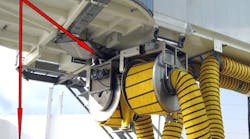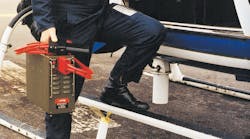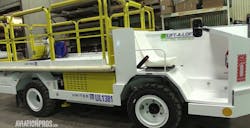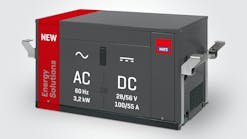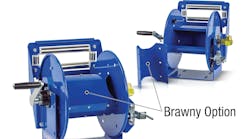Well, we survived another cold season here in the north and the high temperatures of summer are right around the corner, and for some of you it is already in full swing. That means it is PM season for those PCA units around your airfield. As we get geared up to brave those high temperatures, we should all be making sure we are ready to keep those passengers cool while sitting on the tarmac.
Have you ever thought about why this is such a difficult thing to do, and why we require such large units to cool such relatively small spaces? Keep in mind those cabins are packed wall-to-wall with warm bodies heating up the interior space. That is a large thermal load that has to be overcome. More importantly, we need to keep in mind that the plane’s HVAC system is not built like the one in your automobile. There is no recirculate function. In your automobile, as cool air is blown into the interior, that slightly cooler air is drawn back into the evaporator and cooled again. This process continues until you end up with very low output temperatures from the vents, and hence, a cool interior. In the aircraft, all of the cold air is pumped into, through and then right back out of the cabin. Your PCA unit has to then pick up hot outside ambient air and cool it before pumping it into the aircraft. This unit does not have the benefit of recirculated cool air blowing across the evaporator. Hence, the interior of an aircraft requires a large volume of very cool air to keep it comfortable.
This brings us to your preseason check. One of the most important measures of the ability of your unit to cool an aircraft is the outlet temperature. To measure the outlet temperature hold a thermometer in the outlet stream of air at the aircraft coupler. Within 10 minutes, it should show a reading of no more than 50 deg. Fahrenheit. If after 10 minutes the outlet temperature is higher than 50 degrees, this unit will most likely not have the cooling capacity to do its job and you need to take a closer look at why. Units equipped with outlet temperature gauges make checking the operation of the unit throughout the season efficient and easy. Remember to always check the accuracy of the temperature gauge before the season by comparing the actual outlet temperature to the gauge reading. Remember that the longer the hose the larger the difference will be between the two readings. On units with hoses over 50’, it is not uncommon to have a temperature difference of up to 12 degrees between them. This is perfectly acceptable as long as the outlet temperature is not over 50 degrees.
Remember to check the supply hose carefully. Many hoses that appear fine on the outside can have the interior lining torn, which can cause a flap that lowers the volume of air delivered and can allow torn pieces of insulation to be blown into the planes HVAC system. Any hose with internal tears needs to be replaced.
Be sure to check the condition of the radiator, evaporator and condenser fins. Debris oil and gunk can build up and clog these fins, dramatically lowering the efficiency of the unit and its ability to operate properly. Just because your dual heat/AC unit worked without overheating all winter does not mean that a blocked radiator will not cause a problem during the high temperatures of summer.
Remember if the output is not what it should be to check the top 5 causes of reduced unit efficiency:
1. Low refrigerant: Remember refrigerant does not just disappear. If the unit is low on refrigerant, there is a leak somewhere that should be identified and repaired. The use of ultraviolet dye in the system is a fantastic way to locate those small system leaks.
2. Torn or damaged outlet hose: Be sure to check the interior of the hose for damage as well.
3. Missing or damaged gasket on the aircraft coupler: This gasket is often overlooked but is an integral part of the air delivery system.
4. Plugged or fluid soaked evaporator or condenser fins: A pressure washer is a fantastic tool for restoring the efficiency of these units.
5. Don’t forget about damage: The condenser is often damaged when an accident occurs. The unit may not be leaking refrigerant but crimped or restricted tubes in the condenser dramatically decrease its efficiency.
